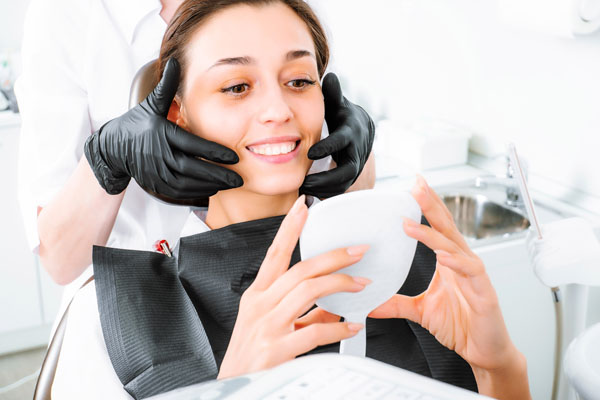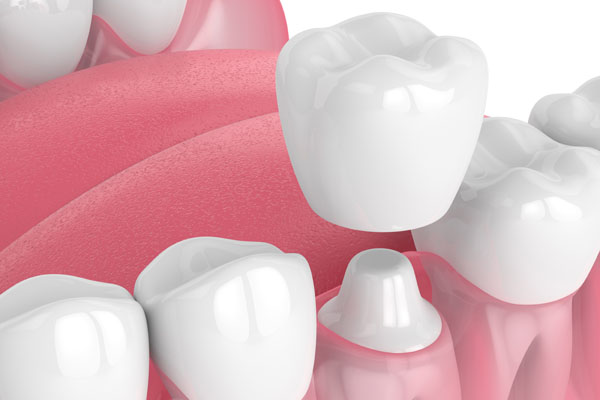Teeth Whitening: It’s All About Science
 Teeth whitening has become extremely popular as an effective way to improve the quality of your smile without having to spend bundles of money. The reason teeth whitening has gotten less expensive, and more effective, is the demand has increased due to an increased awareness of the benefits of whiter teeth. Today you can whiten your teeth with over the counter solutions or by coming in to see us, your teeth whitening dentist.
Teeth whitening has become extremely popular as an effective way to improve the quality of your smile without having to spend bundles of money. The reason teeth whitening has gotten less expensive, and more effective, is the demand has increased due to an increased awareness of the benefits of whiter teeth. Today you can whiten your teeth with over the counter solutions or by coming in to see us, your teeth whitening dentist.
It is important that you have access to teeth whitening given that we live in a world that is full of products that can discolor and stain your teeth. With dietary changes, including adding things like soy sauce to your diet, the demand for quick energy which has resulted in an unprecedented demand for energy drinks, tea, and coffee, and even healthy eating with berries in the diet have increased our exposure to things that can stain our teeth. Take one example, coffee. There are almost 54 thousand coffee shops in the country that serve at least one cup of coffee to nearly 54% of the population over the age of 18. There are so many coffee drinkers that 68% of us will drink a cup of coffee within an hour of waking up, often immediately before or immediately after brushing our teeth. Coffee contains a high amount of chromogens which can stain the teeth very easily.
The Science of Teeth Whitening
Teeth whitening happens through a chemical process known as oxidization. To achieve this, we use a peroxide based chemical solution. These peroxide based solutions are used because peroxide has the ability to quickly penetrate beneath the surface of the enamel, and so teeth whitening actually whitens the teeth from the inside out. The reason why oxidization is a success is it has the ability to release free radicals into the chemical composition of the tooth itself. These free radicals go to work, making the tooth more colorless and hence appearing whiter. Teeth are white because, like all objected, they bend and reflect natural light to a frequency that our brain interprets as a color.
In the case of teeth, this color is white. With the oxidization process, the tooth returns to its original state, and can be even whiter looking than your natural teeth. The two main peroxides used in the chemical formula used to whiten teeth are hydrogen peroxide and carbamide peroxide. The difference is principally that hydrogen peroxide has a longer shelf life, being more stable, and so this is what you would get in an over the counter solution. Carbamide peroxide is typically only used by a teeth whitening professional in a dentist's office.
The reason stronger solutions are not sold in stores is the risk that they can pose to your teeth if used incorrectly. The difference is very clear in the chemical makeup of the products used. Over the counter solutions contain between 3% and 20% peroxide, while the chemical solutions we use contain between 15% and 43% peroxide. This makes the solution stronger, the whitening more effective, and the process much quicker when you have your teeth whitening done by a dentist. When you visit our office, we will whiten your teeth in a way that is safe, comfortable and produces dramatic results.
Recent Posts
Teeth whitening is the practice of using certain substances, such as hydrogen peroxide, to brighten the color of a patient's teeth. Professional teeth whitening treatments can help people enjoy better results than at-home kits for a whiter and brighter smile, and with fewer side effects as well. How long the treatment lasts depends on a…
It is normal for teeth to yellow or become stained over time, but teeth whitening can return a smile to its original brightness. The American Association of Orthodontics reports that more than 30% of Americans are unhappy with their smile. Getting teeth whitened is a simple, easy process that can help anyone regain confidence in…
Most general dentists offer professional teeth whitening as a way to address mild to moderate stains on teeth. However, some patients are hesitant as they fear the bleaching agent used in professional teeth whitening is potentially harmful or the procedure may damage teeth, and understanding more about the safety and health risks of treatment can…
Teeth whitening is a popular procedure that helps to restore the natural color of your teeth. It is a proven method for dealing with staining and discoloration. But you need to understand the pros and cons of teeth whitening procedures. This will help you make an informed decision about the option that suits you.There are…


